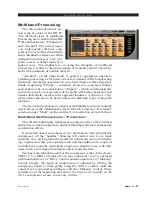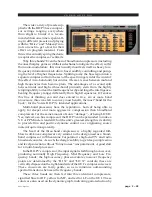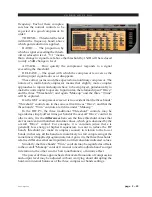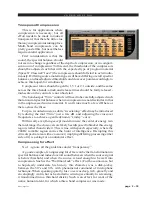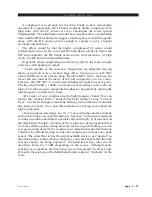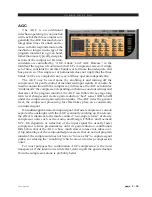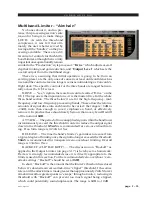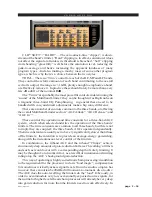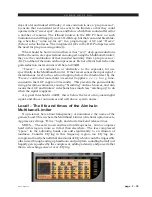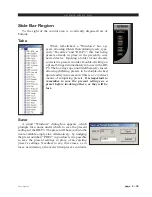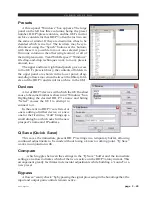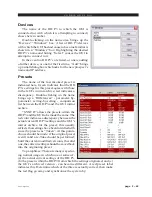
V O R S I S H D P 3 G U I
page 2 – 27
HD P3 / Aug 2006
Multiband Processing
The three-band dynamics sec-
tion is the keystone of the HD P3.
Two different styles of multiband
processing are available in the HD
P3 II, entitled loosely “Production”
and “Airchain”. The former uses a
very high-quality soft-knee com-
pressor for each of the three bands,
and is intended to achieve excellent
transparent control over “raw” pro-
gram sources, whether musical or
spoken voice. The emphasis is on using the strengths of multiband
processing to render a surprising amount of dynamic control “invisibly”
and with a minimum of audible artifacts.
“Airchain”, on the other hand, is geared to aggressive attention-
grabbing processing, as for better or worse is a feature of the broadcasting
landscape. Its reason for existence is to be loud. There are three frequency
bands comprising “Climps” - extremely clean zero-overshoot limiters
each followed by zero-attack-time “clippers” - which can dramatically
reduce the peak-to-average ratios of the audio within their passband, and
hence substantially increase their apparent loudness. A choice of “clip”
styles allows the use to be better tailored to differing types of program
material.
The choice between these two styles of multiband processor is made by
check-boxes on the ‘Multiband’ screen of the GUI, and as a “ProcMode”
selection under “Multi” on the unit itself. A description of each follows.
Multi-Band AGC/Compressor - “Production”
This affords both highly transparent compression free of the artifacts
endemic to normal compressors, and yet at the other extreme wild dynamic
equalization effects.
It was felt an unnecessary disservice to “dumb down” the control of this
compressor; all the “handles” allowing full control over it are made
available. Yes, at first glance the wealth of controls can seem overwhelm-
ing; cognizant of this, pre-cooked presets and the addition of a couple of
controls have made the multi-band compressor simpler to use, with little
need to delve into deeper mechanics unless really desired.
The basic operational model for the compressor is that of the classic
UREI 1176 or DBX 160 units of yore; the compressor “core” is enclosed
within an input level, or “Drive” control, and an output level, or “Makeup”
control. Simply, the depth of compression is adjusted by driving the
compressor harder or more gently using the “Drive” control, while the
output level is adjusted accordingly with the “Makeup” control. These
controls are at the beginning and end of the top row of controls on the
GUI’s compressor screen, so are easy to find.















